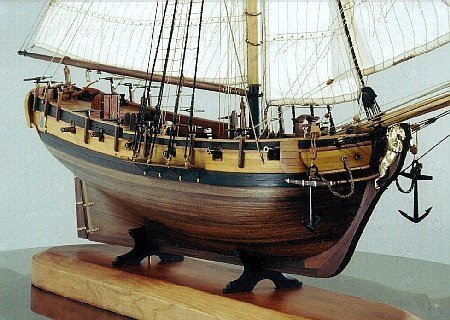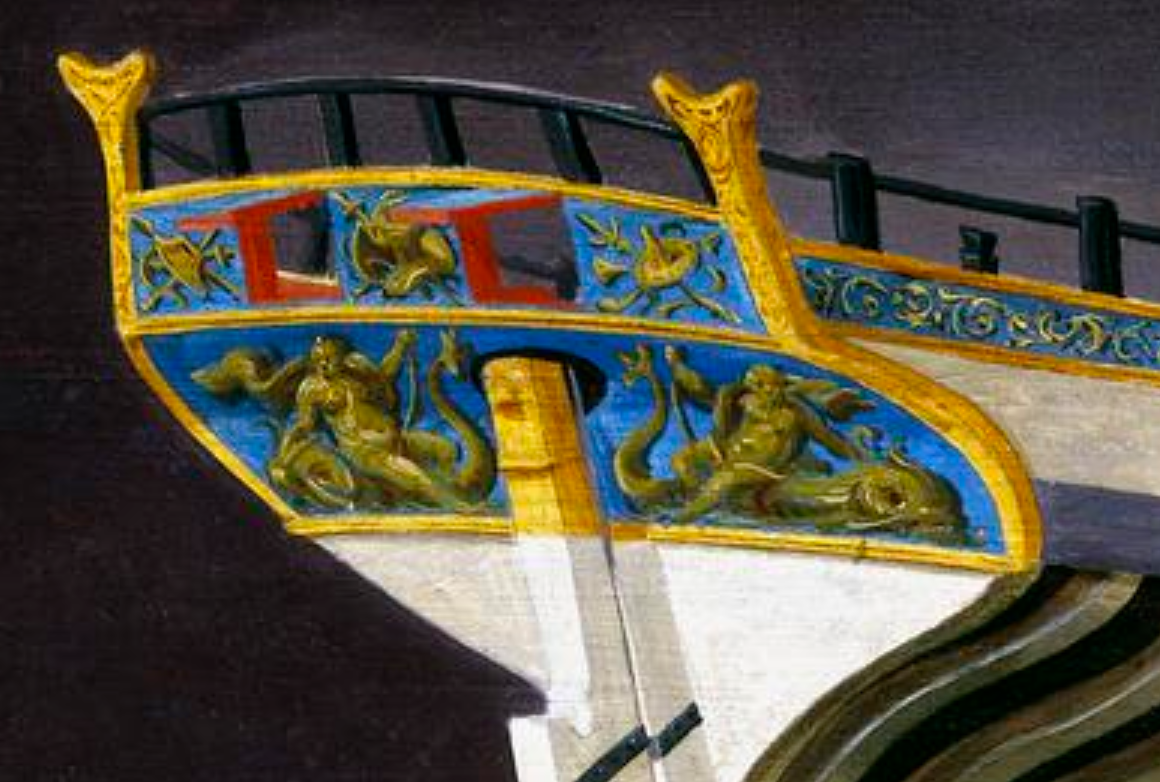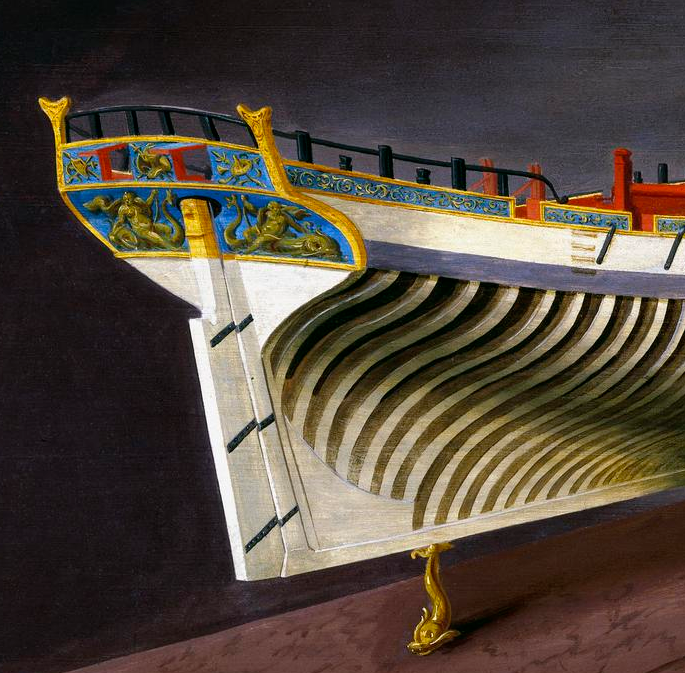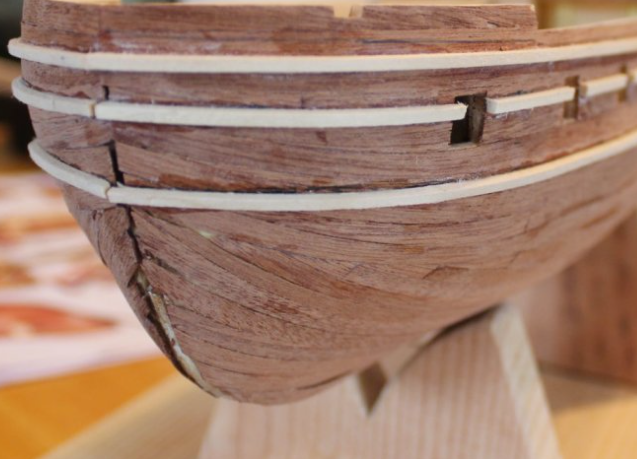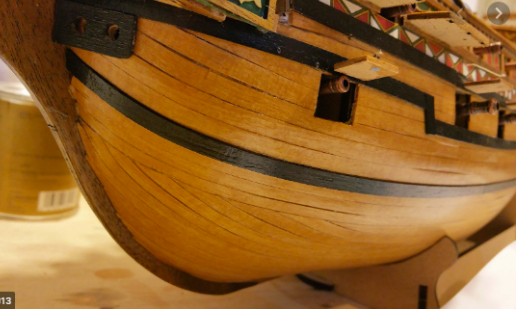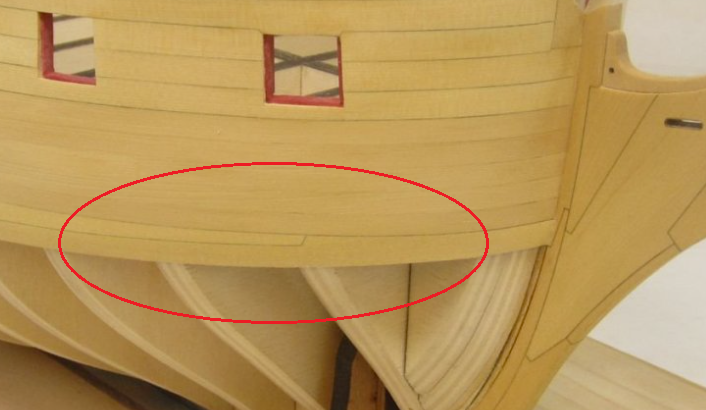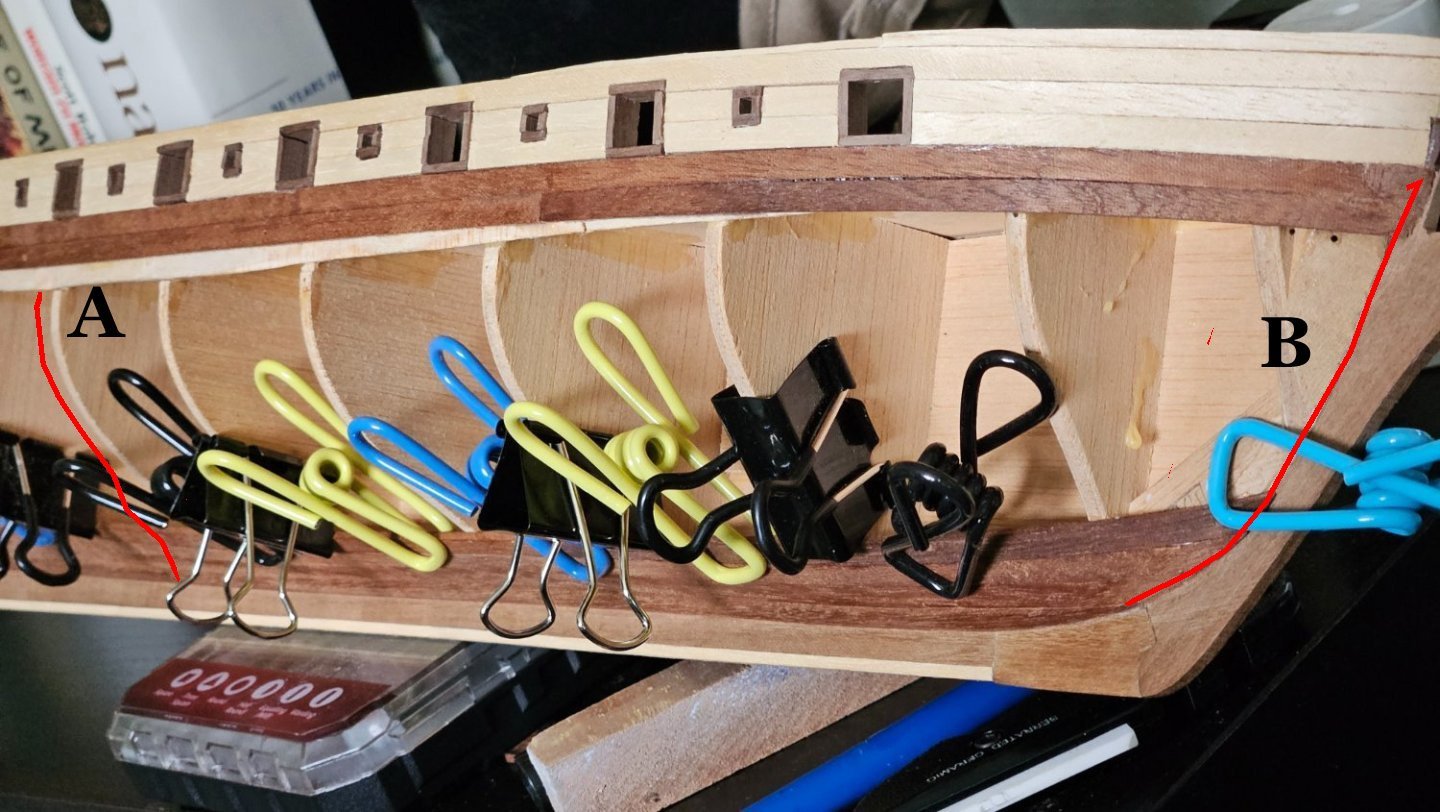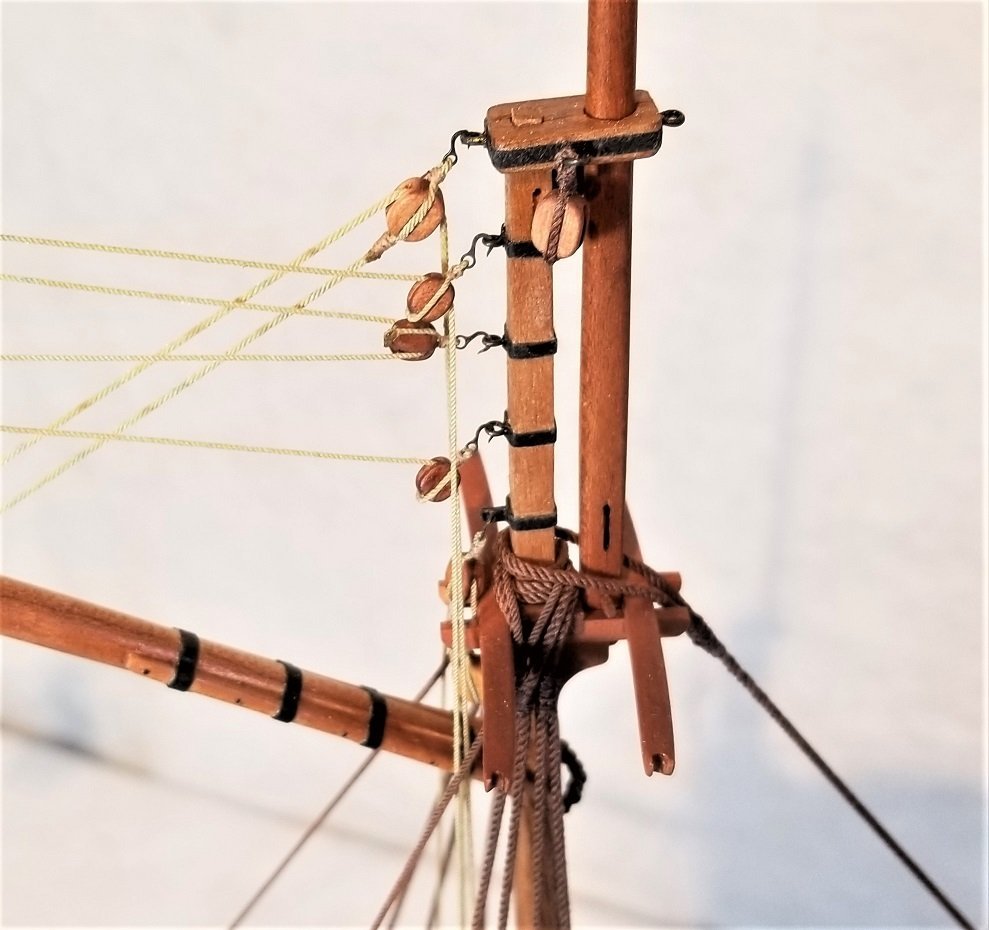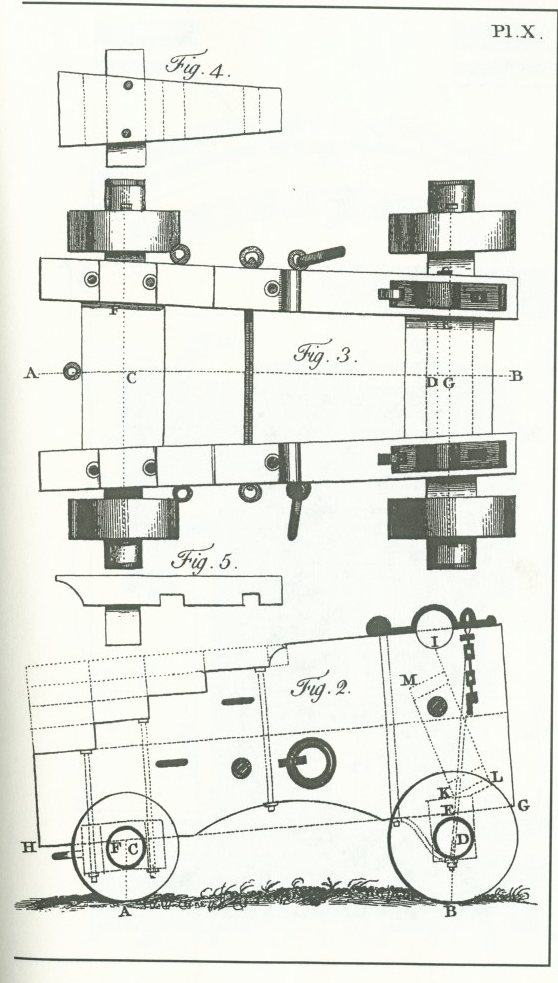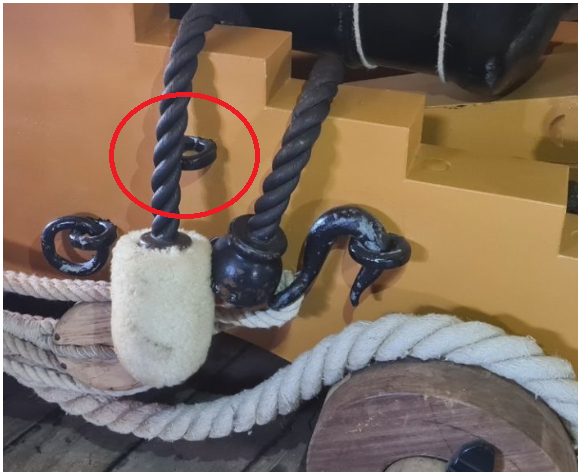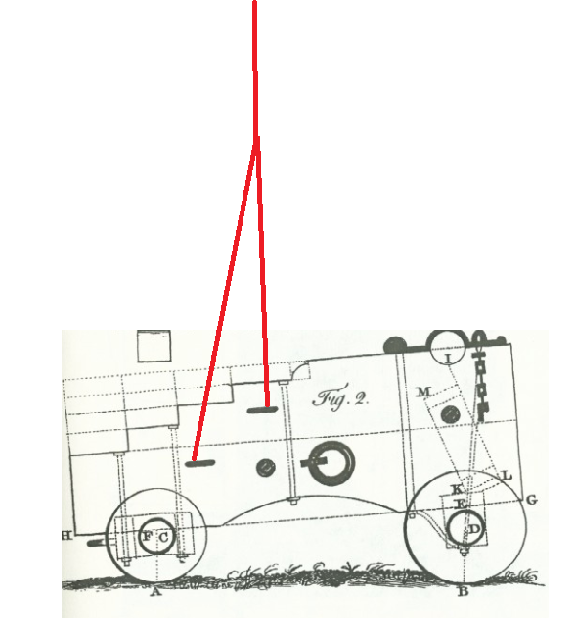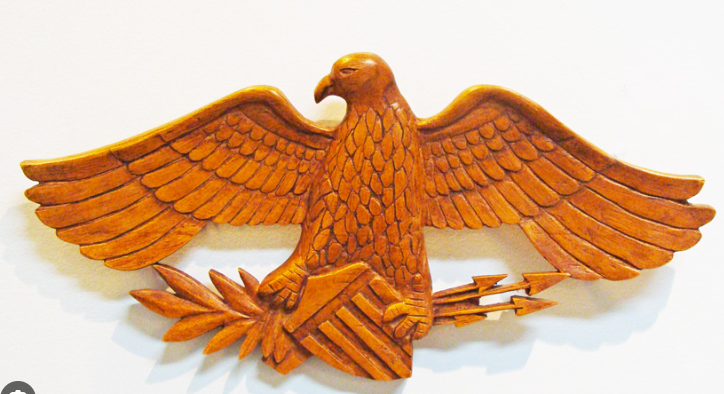-
Posts
3,066 -
Joined
-
Last visited
Content Type
Profiles
Forums
Gallery
Events
Everything posted by Gregory
-
Nice work so far. In Chrome you can go to the link above and pressing Ctrl + will let you zoom in. I'm surprised the detail is holding up pretty good. The image in the middle is still a mystery to me. Feel free to make something up. 😁
- 560 replies
-
- vanguard models
- alert
-
(and 2 more)
Tagged with:
-
Something seems to have happened to my link.. Try This..
- 560 replies
-
- vanguard models
- alert
-
(and 2 more)
Tagged with:
-
Good stuff Aon @Thukydides I think your work looks pretty good. At a reasonable viewing distance I think it would be hard to beat.. I trust you have seen these images from the science museum. It is the best I have been able to find. I think your colors are as good any others I have seen.
- 560 replies
-
- vanguard models
- alert
-
(and 2 more)
Tagged with:
-
Mondfeld shows 12 to be the waterway. Most modeling convention just uses an angled or rounded strip ( like quarter round on the baseboards in a house) sitting on the the margin plank and against gunwales. This actually leaves a seam which would defeat the purpose of an actual waterway. Modeling the waterway as in actual practice would take a lot of effort, usually reserved for highly detailed POF models. I'm not sure how the margin plank is defined in actual practice. It is not that apparent except where some joggling or nibbing is taking place. In the illustration above, it looks like the margin plank may be an extension of the waterway.
-
You should check out Lightburn.. If it is compatible with your controller, it has some very powerful features like a tracer that produces vector images. It has a very robust tabbing feature, so you don't have to worry about drawing tabs in your images. Another powerful feature is resizing. You can work with larger images then resize them to virtually any scale. You can also duplicate. For instance for your oars above, just put one set into LightBurn, then, after you tweak it to get it just the way you want, you can make duplicate items and position them however you want in the work area. You can also save your work, and bring it back later with all your changes and settings. If you are interested in a particular feature, let me know and I will try to answer, though I am still learning.
-
A link always helps, especially for new members. https://thenrg.org/resources/Documents/articles/MastingAndRiggingSpreadsheet.xlsm Don't struggle with being too precise. Visually on a model, a little smaller than exact scale tends to look better, as well as consistent proportions. Block size, in proportion to the line size is also important.
-
The points are not a problem visually on the first planking. Small gaps are not a problem either. Not having them on the 2nd planking is a worthwhile goal, but with kit provided material it may be hard to avoid. Pointed planks can be blended in to the overall look to provide a nice look on the finished model. You may see a kit build that looks like this in the rough, and it will be pretty much what the instructions call for. A finished model that looks pretty good, points notwithstanding. Just do the best you can with what you have in the kit.
-
If I may. My understanding is that you will want to avoid a plank end taper that is less than 1/2 the width of a full width plank. You can do this with drop planks, and the illustration you show is one method. Your illustration shows reducing 3 planks to 2. You can also reduce 2 planks to 1. Here is an example from Chuck's Winchelsea. You can view his method here: ( Click on the arrow in the upper right corner of the content above) Here is another image I used to illustrate turning 8 planks into 7. It's really not that hard to do, but the main obstacle is that it takes some wider stock, twice as wide, than what is provided in the kit. This is a common problem with kit supplied material. If you can source some veneer that matches your stock, you may be able to use this method. If not, you should be able to overcome your problem with simple tapering and not breaking, or just fudging a little on the 1/2 rule. Looking at your image from the previous page, you have to take the number of planks at a midship bulkhead ( A ), then divide the space at B by the number of planks and this would give you the width that the planks must taper too. Whether or not you can do this without some of the planks coming to a point, remains to be seen. You can turn the space covered by 20 planks at midship into 1/2 or less at the stem. If you are limited to the material provided in the kit, this may be your only option.. We have seen a lot of kits that have produced very nice models without following " The Rules ".. The important thing is to sharpen your skills and don't give up.. A lot of kits are abandoned because the builder gets discouraged about not getting it perfect. Don't let ' perfect ' be your goal. I hope this helps. Gregory
-
Archaeological Evidence for the Development of RN Gunnery
Gregory replied to Steve20's topic in Nautical/Naval History
There is gravity, and then there is inertia.... -
I'm with twokidsnosleep. They take a little getting used to. They have a nice aged look rather than the bright look of untreated blocks. I used Fiebing' for these blocks. There is some variation, because the blocks were from mixed batches I got from Syren. Try rubbing them down with some satin poly thats been thinned 50/50 with mineral spirits.
-
This size chart from Syren is a pretty good way to get you in the ball park. https://syrenshipmodelcompany.com/resources/Suren Ultra Scale Rope Size chart.pdf
-
Allan, the replica is clearly not rigged for action , but the question still remains about the circled eyebolt. It is shown on contemporary drawings and is present on the artifact shown above, but we can't seem to find any reference for it's purpose. My best guess is that it may have been used for moving off of, and onto the ship. The two points of connection would have provided more stability. Of course there would be any number of ways to rig a harness for moving, but the two eyebolts would offer a quick solution using hooks. Can anyone find a picture of a carriage being loaded onto a ship? The only pictures I can find are just the barrel.
-
Eagle Emblem
Gregory replied to _SalD_'s topic in Discussion for a Ship's Deck Furniture, Guns, boats and other Fittings
I wonder about the source of Sal's image in the OP. Chances are it is a mirror image. I noticed the orientation of the arrows and the olive branch are reversed from what is commonly seen. That said, I think the orientation of the wings is Sal's primary concern. -
Because it would up the cost of production in a kit, just to include useful information or detail that is going to be ignored by the builder. Most kit builders are not as detail conscious as the members at MSW, and kit manufacturers are not going to go to extra expense to include those details. The guys who really care are the members here, and they can count on guys like you for information to take their build to the next level.😁
-
Eagle Emblem
Gregory replied to _SalD_'s topic in Discussion for a Ship's Deck Furniture, Guns, boats and other Fittings
Henry, the 'presidential eagle' was my example of a Google search. I think Sal is needing the eagle from the Great Seal, but with the wings oriented downward. I just did a search for 'federal eagle' and did come up with this: I'm just not seeing the Great Seal with the shield on the chest and the banner in the beak with the wings oriented downward. Mabey a graphics wiz could combine two or more images to get Sal what he is looking for. -
Decorative trim/rail
Gregory replied to DaveBaxt's topic in Building, Framing, Planking and plating a ships hull and deck
No kit was getting those features ( headrails ,etc. ) right until Chuck came along.. Vanguard is making some very respectable stuff. I'm hoping to get up to speed in Fusion360 and create some respectable parts on my own with CNC.. I'm spending more time on method, than I am on ship building. Maybe I will get to a point where I can help someone out with their kits, but I'm not really interested in doing any full-time production stuff.
About us
Modelshipworld - Advancing Ship Modeling through Research
SSL Secured
Your security is important for us so this Website is SSL-Secured
NRG Mailing Address
Nautical Research Guild
237 South Lincoln Street
Westmont IL, 60559-1917
Model Ship World ® and the MSW logo are Registered Trademarks, and belong to the Nautical Research Guild (United States Patent and Trademark Office: No. 6,929,264 & No. 6,929,274, registered Dec. 20, 2022)
Helpful Links
About the NRG
If you enjoy building ship models that are historically accurate as well as beautiful, then The Nautical Research Guild (NRG) is just right for you.
The Guild is a non-profit educational organization whose mission is to “Advance Ship Modeling Through Research”. We provide support to our members in their efforts to raise the quality of their model ships.
The Nautical Research Guild has published our world-renowned quarterly magazine, The Nautical Research Journal, since 1955. The pages of the Journal are full of articles by accomplished ship modelers who show you how they create those exquisite details on their models, and by maritime historians who show you the correct details to build. The Journal is available in both print and digital editions. Go to the NRG web site (www.thenrg.org) to download a complimentary digital copy of the Journal. The NRG also publishes plan sets, books and compilations of back issues of the Journal and the former Ships in Scale and Model Ship Builder magazines.

